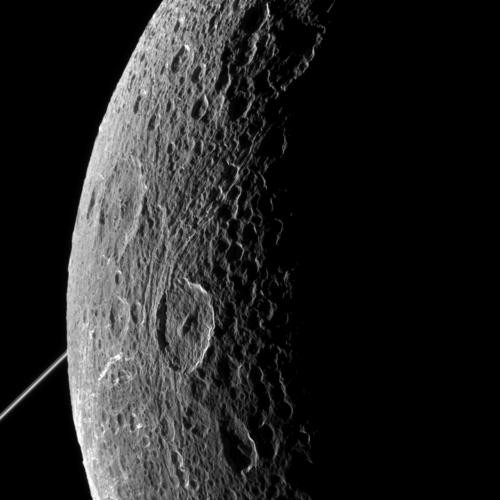NASA's Cassini spacecraft apparently zoomed in on one of Saturn's moons, Dione where it conducted one of its closest flybys to date on June 16, Tuesday.
Cassini's unprecedented view of Dione's cratered surface was captured by the probe with a distance of only 321 miles which is also one of its closest approaches. However this fourth flyby by the spacecraft was not the closest, where its third flyby in December 2011, the probe descended onto the moon's terrain at a mere 62 miles.
This new image was taken by Cassini's narrow angle camera and was captured while the probe was at a distance of 48,000 miles from the moon where Saturn's majestic rings can be observed from the distance.
This image was taken during Cassini's penultimate flyby and is also part of the last series of the scientific phase of the mission before it begins its final stage.
Mission controllers are already preparing for the spacecraft to swoop down on Saturn's ring plane where it will be placed into its polar orbit. The Cassini team will then transmit commands to the spacecraft where it will start to explore the rings of the gas giant, offering the closest view ever of Saturn's rings and its mysterious environment.
After visiting the pockmarked Dione, Cassini will then embark on its next mission where the spacecraft will conduct a remarkably close flyby of a mere 30 miles on the surface of Saturn's other moon, the mysterious and icy Enceladus.
Scientists believe that a vast liquid ocean is hidden underneath Enceladus' icy crust from evidence of polar geysers that are spewing salty water vapor into space. When the Cassini spacecraft meets Enceladus, mission controllers hope to get data from the composition of this salty water vapor in order to explore if the moon is suitable for life.



























